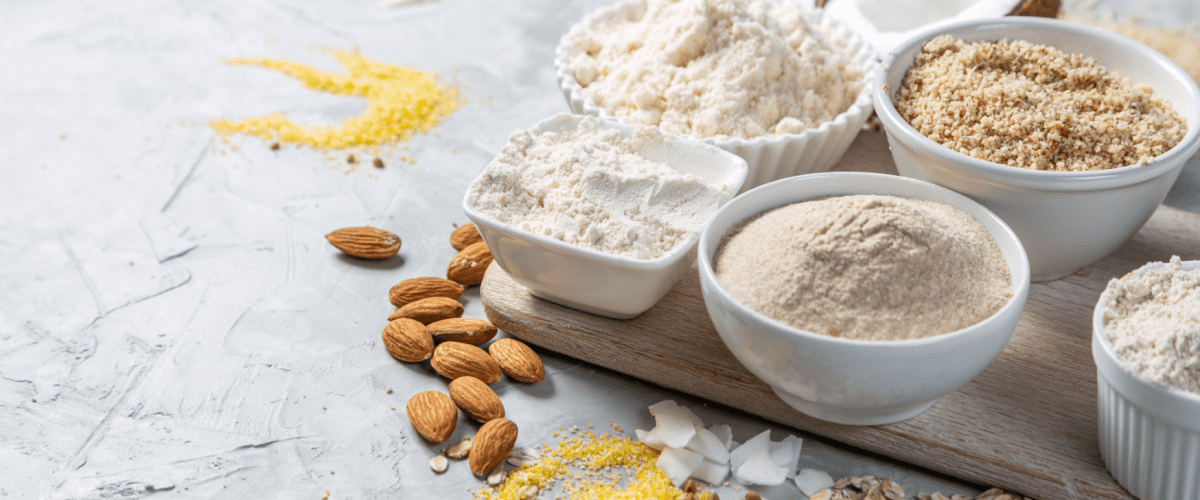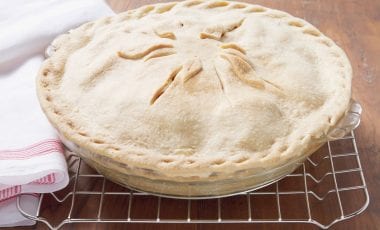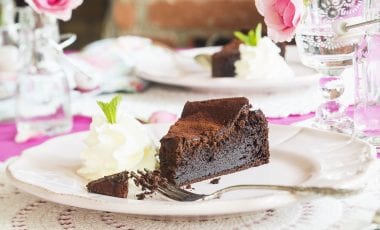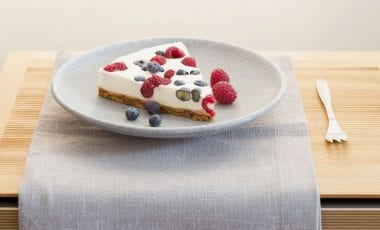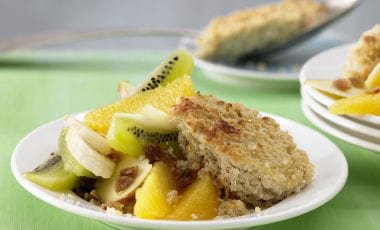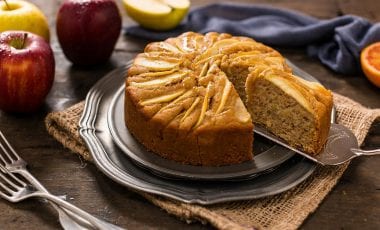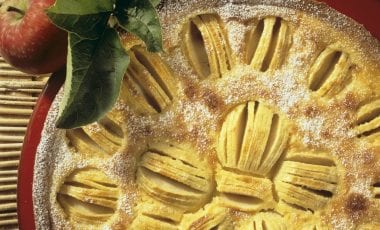The spectrum of different flour varieties and types is wide. Nevertheless, it is possible to maintain an overview!
Different types of grain, different type numbers: a glance at the flour shelf can quickly be overwhelming. What makes a cake taste best? Which flour gives bread the desired consistency? There are also some flour alternatives. Are they just as suitable for baking? You will find all the answers to these questions here. Next time you go shopping, you can then confidently choose your favorite flour.
By flour, we mean very fine ground products with a particle size between 14 and 120 µm. We distinguish between wholemeal and white flour depending on whether the whole grain, including its outer layers, or only the inside of the grain, the so-called endosperm, is ground. However, white flour is also available in various degrees of milling. In these cases, the type number indicates how much husk content is still contained. The higher the type number, the higher the husk content. A higher husk content is also associated with a higher content of fiber, minerals and vitamins.
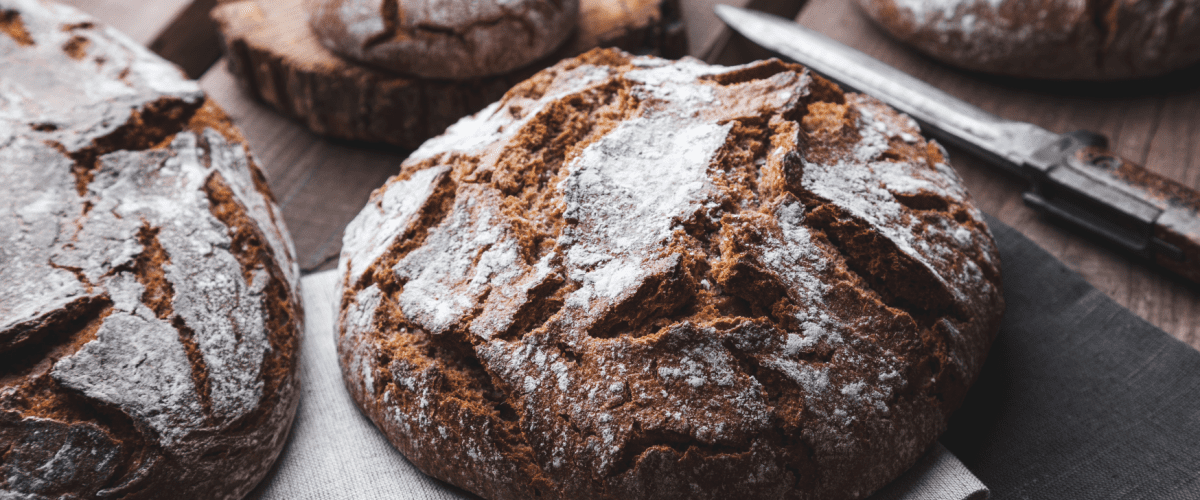
The best baking results, thanks to suitable flour types
If you are concerned about health benefits alone, wholemeal flour, followed by high type numbers, takes the lead. However, since taste and enjoyment are also important, it is helpful to select the type of flour according to its intended use. The rule of thumb here is that the finer and airier the intended baking result, the lower the type number should be.
If you have wholemeal flour, type 405 and type 550, in your larder you are very well equipped. Type 405 is perfect for fine cakes such as pound or layer cakes. Light-coloured rolls and lightweight bread work best with type 550. This type of flour is also suitable for coarser cakes. Whole grain flour is best mixed with type 550. Another option for a rustic bread is to use type 812 flour. Type 1050 flour or pure wholemeal flour prevent the dough from rising particularly well. The reason for this is that higher types and wholemeal flour bind water more tightly and contain more gluten protein. When replacing lower types with significantly higher ones, the liquid in the dough must therefore also be increased.
The types mentioned above refer to wheat flour. Depending on your taste, spelt or rye flour provide a tasty alternative. For spelt flour, types 630, 812 and 1050 are common. Rye flour can only be found in higher degrees of milling. Because of its inherent taste, it is only suitable for savoury baked goods. In rye breads, sourdough loosens the texture because yeast alone is not enough. Therefore, rye flour cannot, on its own, replace wheat and spelt flour in recipes.
Incidentally: the lower the degree of milling, i.e. the flour type, the longer the shelf life of the flour. Flour type 405 has a shelf life of up to 18 months if stored in a dry place. Wholemeal flour, on the other hand, only lasts six to twelve months, as it can become rancid more quickly. Nevertheless, consume your product at an early stage, as this ensures the best baking properties.
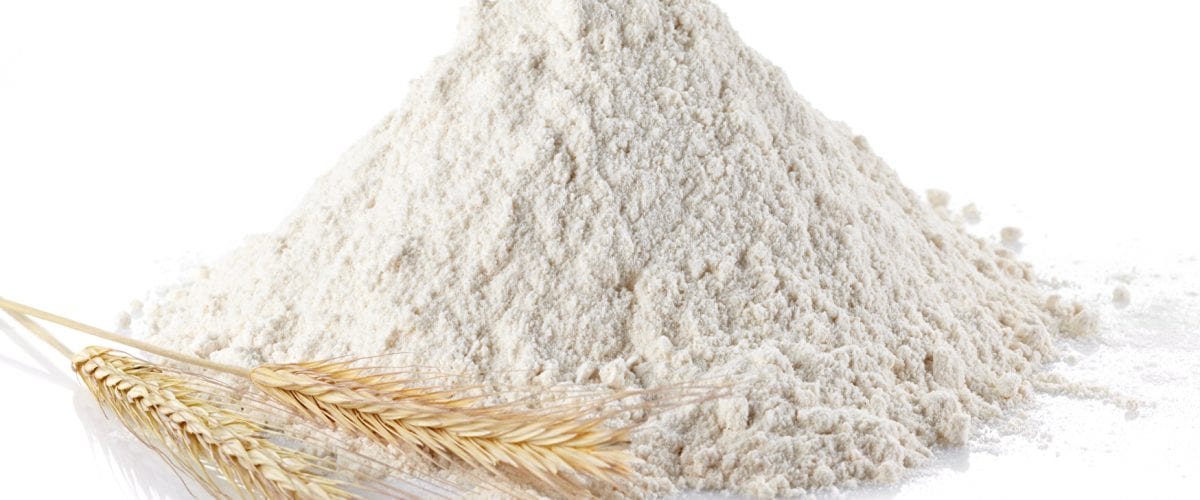
Smooth, semi-coarse, coarse, extra-coarse
An indication of the coarseness can also help you to find a suitable flour. Coarseness describes the fineness level of the flour. Smooth flour is usually type 405 flour, whereas coarse flour gives doughs a certain elasticity. This makes semi-coarse and coarse flour ideal for pasta or pizza dough. Extra-coarse flour is even more granular, can be rolled out very easily and is used in potato or yeast doughs. Since such flour is also highly soluble, it can bind sauces or soups. This ability also gives extra-coarse flour the common name “instant flour”.
Varied and tasty: flour alternatives
Conventional cereal flours are unsuitable for people suffering from gluten intolerance. However, you don’t have to give up delicious baked goods, pasta or pancakes! Fortunately, there are more and more products made from so-called pseudo-cereals. Quinoa and buckwheat are famous examples of this. Eggs, corn starch or rice flour are excellent for binding doughs made from pseudo-cereal flour. This step replaces the task of the gluten and creates doughs suitable for baking. Pancakes, blinis and crêpes are also successful without starch. If you can tolerate conventional cereals but want to try something new, it is a good idea to mix wheat and buckwheat flour.
Pulses have also entered the flour market: ground chick peas or sweet lupines provide valuable nutrients and open up new baking possibilities. Nuts are another possibility: for example, chestnut, almond, coconut, walnut or hazelnut flours are available. Whether you use pulse or nut flour, both types bring a considerable individual taste to the dough. It is therefore best to replace only part of the cereal flour with pulse or nut flour. Additional starch is also necessary here for binding. Furthermore, while pulse flour is more suitable for savoury pastries, the slightly sweet almond flour is best used to spice up sweet pastries.
Oats are also among the flour alternatives. But even though oats belong to the classic cereals and are rather unsuitable for people with gluten intolerance, this is not a typical baking flour. Rather, it enhances other cereal doughs. Do you still want to make pure oat dough? In this case, the same applies here: additional binding agents will conjure up a bakeable dough. Have fun experimenting!

